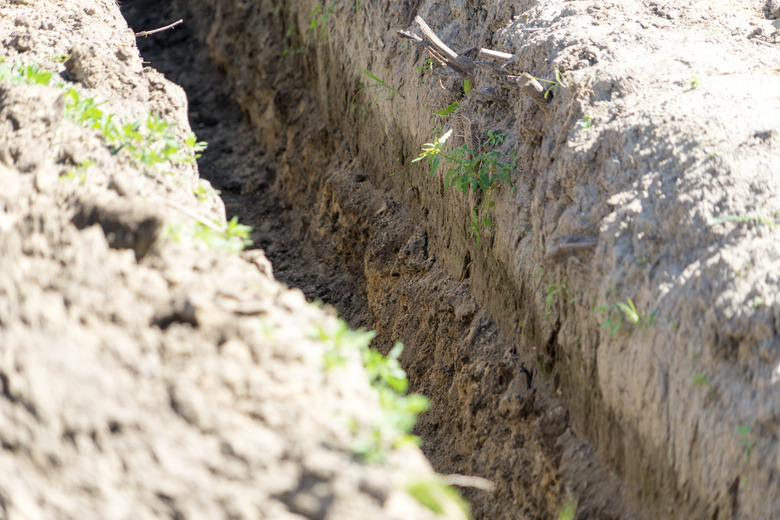How Deep Should You Install French Drain Pipes?
Are things getting a little too wet in your landscape? Whether you have water in your basement, damage to your patio or just a soggy area where water pools, a French drain pipe may help divert storm water to keep it away from those areas. Getting the depth correct can determine just how successful your French drain is at moving the water where you want it.
What Is a French Drain Pipe?
What Is a French Drain Pipe?
A French drain in a yard is simply a perforated pipe that gets buried in a trench filled with gravel. It's a way to control storm water underground. Instead of naturally rushing toward homes, patios and other structures based on the slopes of the land, water moves where the pipe directs it to help stop the water issues you're having.
The water filters through the gravel that fills the trench. It can then flow freely through the perforations on the pipe. Once inside, the water travels the length of the pipe, which is properly sloped to help direct it. Your French drain design should take into account where you want the water to end to avoid directing the water somewhere that will cause more issues.
Uses for French Drains
Uses for French Drains
Your purpose for installing a French drain can impact both the location and the depth of the trench you dig. One common purpose is to prevent water from leaking into your basement or pressing against your slab foundation. Installing a French drain can allow you to move the water away from the foundation, which may help dry up your basement water issues.
You can also use a French drain to keep water from pooling in low areas of your yard. It can help if the natural slope of your property directs water right toward a patio or other outdoor structure. French drains can also help divert water when you're building a retaining wall on a steep slope.
Depth Recommendations
Depth Recommendations
The water issue you're trying to solve often helps dictate the depth. If you're dealing with pooling water on the surface of your property, your best bet is a shallow trench. If you're trying to stop water from getting into your basement, you need a deeper French drain that reaches footing level.
The minimum depth is typically 18 to 24 inches. This depth helps capture most of the water that's an issue. If your goal is to protect your foundation or keep water from getting into the basement, you want your pipe installed deep enough to achieve that goal. For a slab foundation, you want the pipe below the slab or about 2 feet. If you have a basement, you can install the French drain 6 feet deep or more depending on the depth of your basement.
Slope of French Drains
Slope of French Drains
Another consideration when choosing the depth for your French drain installation is the slope. To make the water drain where you want it, the pipe needs to lie at a slope in the correct direction depending on where you're diverting it. The general rule of thumb is to slope your French drain pipe 1 inch for every 8 feet of length. Keep this slope in mind as you dig your trench.
French Drain Trench Width
French Drain Trench Width
Depth is just one factor in your trench size. You also need the correct width to accommodate your pipe. You'll typically make your trench at least 12 to 24 inches wide. The pipes used for French drains are typically 4 or 5 inches in diameter, so you don't need a huge trench. However, areas with large amounts of water may call for a pipe with a larger diameter, so you may need to increase the width of the trench to accommodate the larger pipe.
